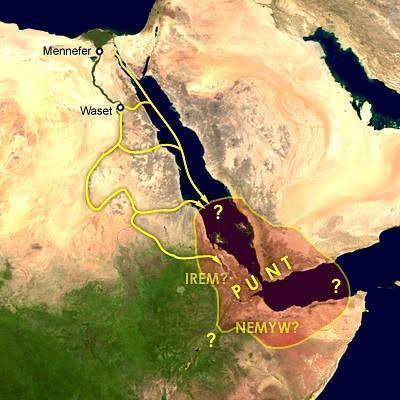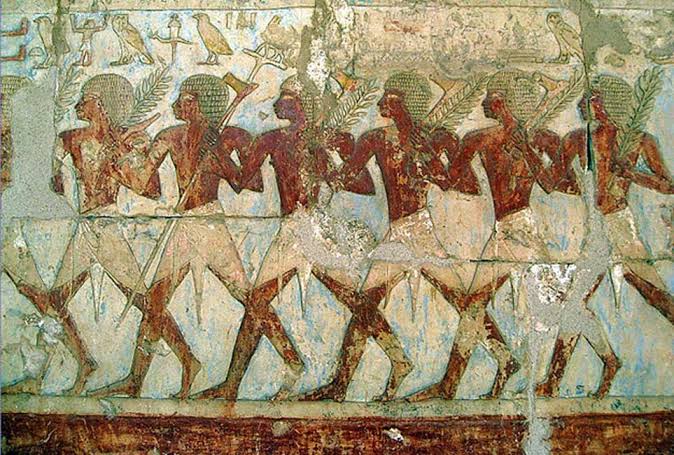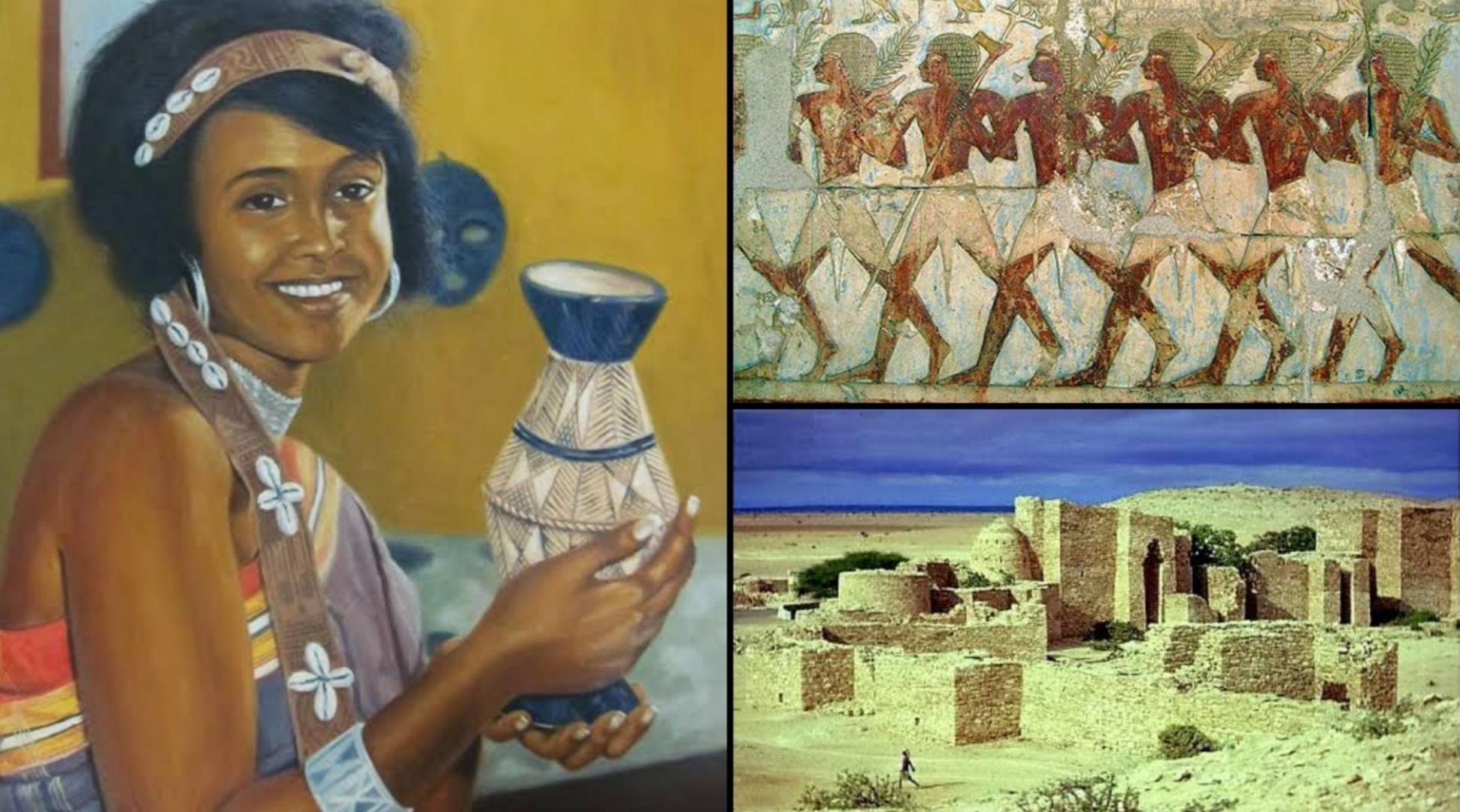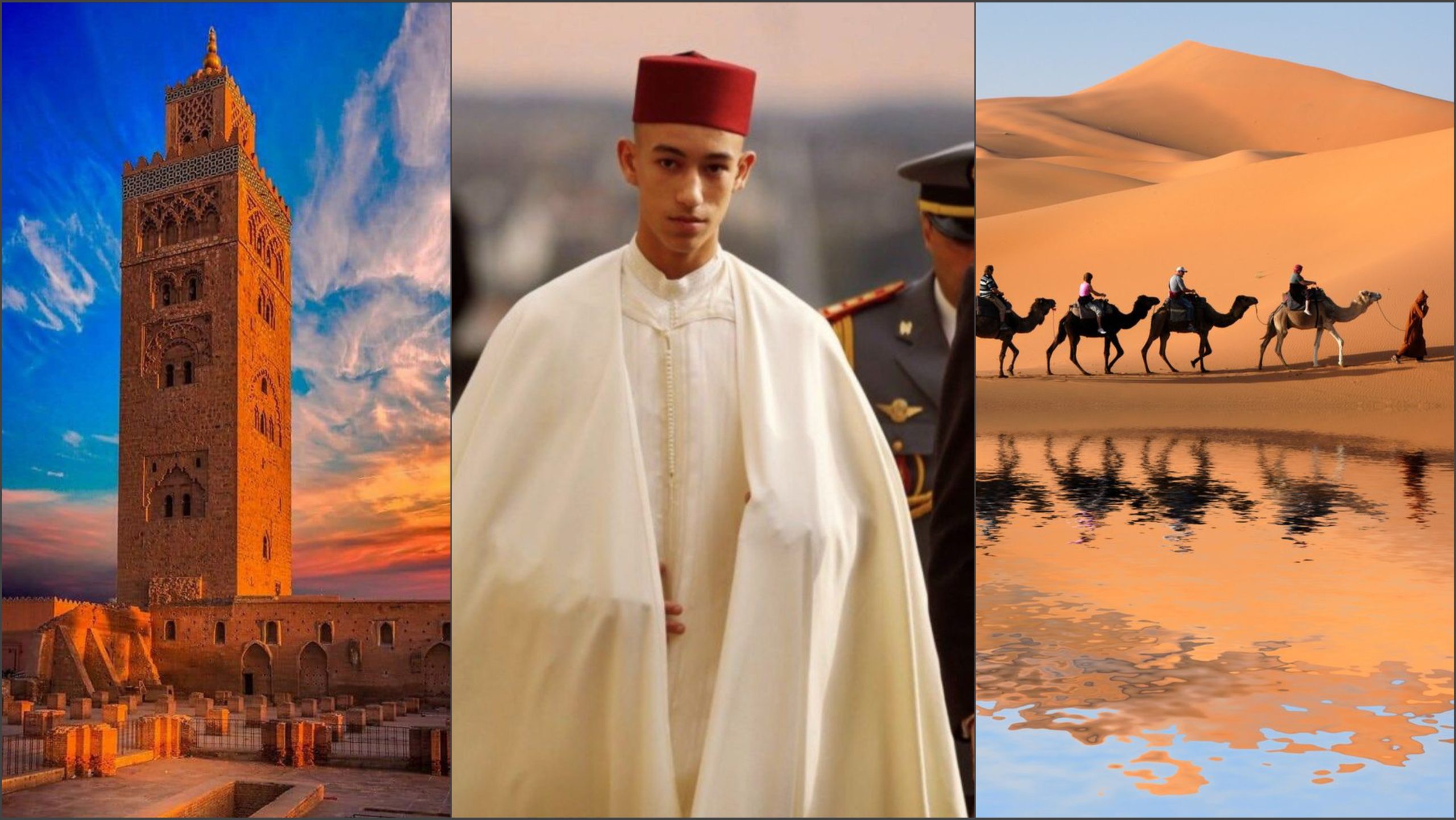kingdom of Punt is referred to in ancient Egyptian texts as the “Land of the Gods” – Ta Netjer. Punt’s history is linked with that of the ancient Egyptian kingdoms, and the kingdoms valued Punt as a trading partner.
Signs of exchange had already begun to appear in Egyptian material evidence during the pre-dynastic period (c6000 – 3150 BC). During the early dynastic period (c3150 – 2613 BC), there is evidence of trade with Mesopotamia and Phoenicia.
The Egyptian civilization started to extend trade with Punt during the Fifth Dynasty (c2498 – 2345BC). One of the places mentioned often in their Temples and other drawings in the material evidence is the Kingdom of Punt, one of the Egyptians’ most respected trading partners and a seemingly wealthy empire in its own way.
During the reigns of Pepy II (2278 – 2184 BC), evidence of trade and diplomatic connections appeared in the tomb inscription of the military commander Pepynakht Heqalb, Amunhotep (1425-1400BC), Rameses II (1279-1213BC), and Rameses III (1185-1155BC).
Punt exports to Egypt
Punt provided materials for Egyptian temples, such as leopard skins for priests to wear, gold for statue-making, incense introduced from Punt by Egypt that was burned in temples, Punt scenes to decorate the walls of Egyptian rulers, and myrrh produced from Punt.
Punt also exported skins from cheetahs, panthers, and giraffes to Egypt, as well as wild animals, live apes, elephants, ivory, spices, precious woods, cosmetics, aromatic gum, frankincense, and 31 incense trees (Boswellia).
Marc Van de Mieroop writes in his book (Van De Mieroop, M. A History of Ancient Egypt) that, “Among the goods imported were complete incense trees as well as loose incense, an expensive fragrant tree extract that was used in [religious services] as an offering to the gods. The expedition gathered enormous heaps of it and the accompanying inscription asserts that such amounts had never been acquired. The relief’s prominence indicates how proud Hatshepsut was of the expedition’s achievements”
According to these extracts, Punt was a great trading empire, and Hatshepsut herself was astounded by Punt’s wealth.
Plant transplant
Due to an expedition sent by Queen Hatshepsut, Egypt successfully domesticated Boswellia trees imported from Punt.
Punt import
Punt imported from Egypt tools, weapons, metals and jewellery.
Location of Kingdom of Punt

No one knows where the Punt Empire was situated, but historians have narrowed it down to somewhere in Northeastern Africa based on facts. Richard Pankhurst researched items depicted in ancient Egyptian paintings of trade with the empire, which included gold and highly aromatic resins. Along with this, they portrayed animals such as lions and giraffes, suggesting that Punt was situated in the eastern part of North Africa.
Although no one has been able to locate Punt, ancient Egyptian documents suggest that the Kingdom existed and was a flourishing empire in its own way, providing us with a wealth of knowledge about their customs, lifestyle, and trade.
A group of Polish archaeologists led by Dr. Fillip Taterka, an Egyptologist at the Polish Academy of Sciences, discovered the new evidence. He discovered a representation of the secretary bird at Deir el-Temple Bahari of Hatshepsut.
This bird is portrayed as a Punt resident. Since that bird can only be found in Africa, Richard’s point about position is strengthened. More recent research indicates that Punt could be in modern-day Somalia, but the evidence is not definitive. We do know, however, that it was an African Empire.

Time Period
Punt’s reign is believed to have lasted from about 2400 to 1069 BCE. We know that Egypt started trading with Punt around this time, and it is likely that the Empire is much older than previously estimated.
However, due to the scarcity of Empire-era artifacts, identifying the exact date of the Empire is difficult. Some have speculated that Punt is nothing more than an Ancient Egyptian depiction of an imagined Utopia, as Punt’s alternate name translates to Land of the Gods.
Scholars are astonished by the fact that the ancient Egyptians and Somalians shared identical words in both languages. Most scholars infer from this that Egypt influenced the Somalis, though influences could have gone both ways.
Grandeur of the Punt Empire
The Egyptians bestowed the greatest compliment on the Punt Empire by calling it Ta Netjer, or Land of the Gods. It is presented as a land of plenty and many luxuries. Punt seems to have been a land of luxury, with precious metals such as gold and a variety of aromatic incenses.
One of the most famous exchanges involving Punt was probably that involving Queen Hatshepsut’s expedition in 1493 BCE during the Egyptian Empire’s eighteenth Dynasty. The trade between the Egyptian and Punt Empires brought back living trees to Egypt. This is also the first instance of foreign plants or fauna being transplanted into another nation.
Origin of Egyptians?
Hathor is a significant Egyptian goddess who is known as the symbolic mother of the pharaohs, who are the earthly equivalents of Horus and the sun gods Ra. She is Ra’s polar opposite as the eye of Ra. Her vengeful side defends her from enemies.
Her compassionate side inspired music, dance, fertility, laughter, devotion, sexuality, maternal treatment, and assisted departed souls in their journey to the afterlife. In the old and intermediate eras, where pharaohs identified with other male gods, Hathor was identified as the mother of those gods and consort of the father of those gods.
Hathor was depicted with a cow horn headdress and a sun disk. She was described as a cow, lioness, cobra, or sycamore tree in animal form. Hathor was eventually eclipsed by Isis.
Many temples were dedicated to Hathor, including the Dendera Temple in Upper Egypt. With such large obligations, Hathor was invoked in a variety of prayers and gained prominence outside of Egypt, in Canaan and Nubia. Inscriptions by Hatshepsut and Egyptians from the 18th Dynasty Era describe Punt as Hathor’s origin.
Present Day Descendants
There are several reasons to conclude that Somalis are modern-day descendants of the Punt Empire. For one thing, the ancient Somali name for one of their cities is Bunn, which is a strong indicator that this is Punt.
Aside from that, all of the luxuries and trade that existed between Egypt and ancient Punt can be found in Somalia. As a result, Somalia is most likely the site of the Punt Empire.
Furthermore, some Somali culture bears a strong resemblance to that of the ancient Egyptian Empire, such as the Dhaanto, a dance that bears a strong resemblance to an Ancient Egyptian dance, as seen in the image below.
There are also several linguistic similarities between Somali and ancient Egyptian Vocabulary, suggesting that the region was heavily influenced by Egypt, and Punt, as a trading partner, would have been greatly influenced by the Egyptians as well.
The Puntites wore “Gundhate” or “Gunti” – a white royal loincloth – similar to the Egyptians.
World first
Donkeys were first domesticated in Northeast Africa. The current donkey’s ancestors are the Somalian and Nubian subspecies of the African wild ass.
Decline of Kingdom of Punt
Nobody knows what happened to the Punt Empire, but as more detail becomes available, one thing becomes clear: this is one of the world’s great empires, with a history worth learning. It is also evident that they must have had a strong military, or else the Egyptians would have defeated them, particularly given the vast wealth of the Empire.
 The African History Truly African
The African History Truly African

